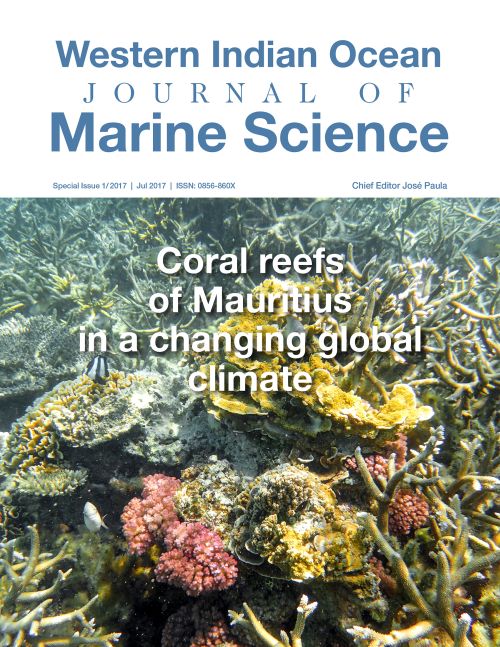Main Article Content
Differential substrate affinity between two giant clam species, Tridacna maxima and Tridacna squamosa, around Mauritius
Abstract
Giant clams have been mostly reported in the South Paci c and Indian Ocean. The aim of this study was to com- pare the substrate a nity between two species of giant clams, Tridacna maxima and T. squamosa. Field surveys were carried out in April and May 2016 within the reef areas of three geographically di erent sites around Mauritius Island: Black-River; Ile D’Ambre; and Belle Mare. Using triplicate (n=3) belt transects of 50m × 10m (500m2), giant clams were identi ed, quanti ed and the substrata to which they were attached were noted. Results indicated that 90% of T. maxima bore partially in colonies of Porites spp., potentially making them less vulnerable to natural and anthropogenic pressures. T. squamosa individuals, on the other hand, were more exposed as they were attached to at substrata such as dead plate corals or rubble. This di erence may be attributed to the shape of the giant clam shells. For instance the bottom section of T. squamosa’s shells are scaly as compared to that of T. maxima. This morpholog- ical di erence may be one of the factors that in uences the choice of substrate. Further investigations at additional sites will provide more information on the preference of substratum by these highly valued Tridacnid species and inform appropriate conservation and management approaches.






